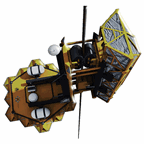 There has probably been enough time elapsed since the end of the 2008 Space Elevator Conference (last Monday) to have all the articles about it percolate through my RSS feed reader – hence I think this is a good time to do a round-up of those articles.
There has probably been enough time elapsed since the end of the 2008 Space Elevator Conference (last Monday) to have all the articles about it percolate through my RSS feed reader – hence I think this is a good time to do a round-up of those articles.
First up, of course, Alan Boyle’s Cosmic Log article, “Will the Space Elevator Rise?”. It was good to see Alan again. His office is just a short ride away from where the conference was held and he invited me to visit it, but I just didn’t have the time (I had to forgo a schedule interview, too, sigh…). Anyway, it’s a fine article, but has prompted a note of Tom Nugent (from LaserMotive) who is quoted in the article as saying that a Space Elevator would “never be built”. Tom tells me that he told Alan that the FIRST one would not be built on Earth (and he gave a presentation about that), but that someday it might be possible. I wasn’t part of the conversation so I don’t know who said what to whom in response to which question.
The conference was also featured in Gizmodo, who concentrated on the Lego Space Elevator brought to us by the Japanese contingent. I have a few other pictures of this Lego model which I’ll send off to Gizmodo. This must a very popular site; the mention of the Space Elevator Blog caused a large spike in my traffic.
Mary Stevens Decker wrote a fine article about the conference in the PNWLocalNews.com Lifestyles section. It certainly sounds like, from the article, that she attended the Conference; I’m sorry I didn’t get a chance to meet her.
Did you know that there is a podcast show out there devoted to the Elevator industry? Neither did I. The Elevator Radio Show.com is just such a show. This host of this show, Tom Cyber Sybert, briefly covers press stories that have anything to do with the Elevator “field”. Many of the stories in this weeks show were about the Space Elevator and the Space Elevator conference. In the past, I’ve been the recipient of emails from someone purporting to represent an Elevator manufacturing company in China and promising me the “best prices” on Elevator parts, but this show clearly treated us as not an ordinary Elevator application. On a related note, I was recently interviewed by Revista Ascensores, a Spanish language publication devoted to the Elevator industry. Again, the interviewer clearly knew the difference between a “normal” elevator and what we’re trying to do, but thought the interview would be interesting and fun for their readers. One other note about The Elevator Radio show.com; they are out of Chicago (my own neck of the woods) and they are currently sponsoring a contest where the prize is a Beer-making kit – these guys rock! 🙂 Finally, they mentioned another website, ElevatorGear.com, a site where you can buy such things as a “Rosenberg Tagged Elevator Oiler” and a book published in 1927, “Electric Elevators”.
In an article in Seattlepi.com, Todd Bishop points out that Microsoft’s sponsorship and hosting of the 2008 Space Elevator Conference doesn’t necessarily mean that they’re interested in building one. Sigh, too true…
In another Seattlepi.com article, Tom Paulson discusses the recent coverage and quotes several of the attendees, including Akira Tsuchida, captain of the E-T-C (Earth-Track-Controllers) Space Elevator team and member of the Japan Space Elevator Association, who joked that a Space Elevator would be better for Japan than rockets because “…if we shoot (a) missile in Japan, North Korea might become angry”.
In itworld.com, Nancy Gohring writes about the recent conference and the idea proposed by Dr. Brad Edwards of opening a theme ride in Florida which would simulate a ride on a Space Elevator. I think this is a fabulous idea (and blogged about it earlier, here). This facility would also be doing research into carbon nanotubes in a facility which could be viewed by the public. I hope this idea happens.
On the KiroTV.com site, there is a short article about the Conference along with a link to a video clip (a news report) about the Conference. Alisa Brodkowitz, co-chair of the “Legal Pillar” committee / workshop, is quoted talking about insurance issues and how they relate to a Space Elevator.
In Kappa Alpha Iota, the “author and Susan” blogged about the conference and their thoughts on it.
And that’s about it…
29JUL08 Update – Yes, there are other sites out there with Conference related stories, but as far as I have been able to tell, they are ‘reprints’ of ones I’ve listed here.

 On this day, 50 years ago, President Dwight Eisenhower signed The National Aeronautics and Space Act (Pub.L. 85-568) to create The National Aeronautics and Space Agency, more commonly known as
On this day, 50 years ago, President Dwight Eisenhower signed The National Aeronautics and Space Act (Pub.L. 85-568) to create The National Aeronautics and Space Agency, more commonly known as 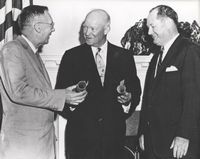
 There has probably been enough time elapsed since the end of the
There has probably been enough time elapsed since the end of the  On the
On the  From July 23rd to July 25th, the University of Maryland Baltimore County is holding
From July 23rd to July 25th, the University of Maryland Baltimore County is holding  Because this year’s Space Elevator Games have been moved back to sometime in mid-late October, the dates for the
Because this year’s Space Elevator Games have been moved back to sometime in mid-late October, the dates for the  A few days ago, I received this news from Brian Turner, captain of the
A few days ago, I received this news from Brian Turner, captain of the 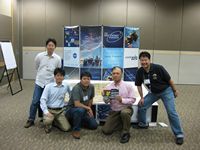
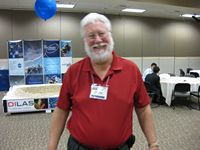
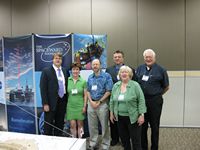
 We have a large Japanese presence at the conference this year, and they have made a tremendous contribution to the proceedings. In addition, to making several presentations (and some very exciting announcements), they have brought an exhibit, a DVD we all watched during the “Mixer” hour this evening and probably a few other things I’m forgetting to mention. They even brought some gifts for yours truly, some Pocky for my kids and a copy of the Edwards-Westing book translated into Japanese (a book I
We have a large Japanese presence at the conference this year, and they have made a tremendous contribution to the proceedings. In addition, to making several presentations (and some very exciting announcements), they have brought an exhibit, a DVD we all watched during the “Mixer” hour this evening and probably a few other things I’m forgetting to mention. They even brought some gifts for yours truly, some Pocky for my kids and a copy of the Edwards-Westing book translated into Japanese (a book I 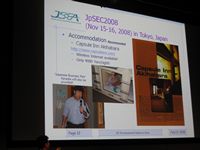
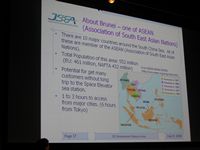
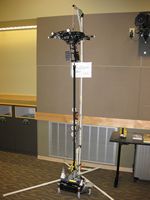
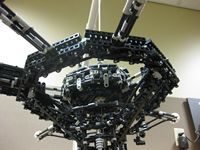

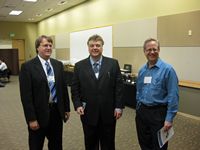
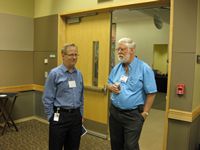
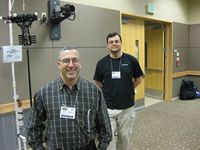
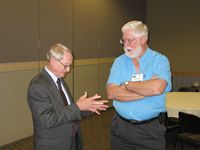
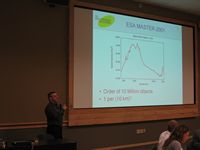 In this picture, however, Ben is responding to a presentaton given earlier by Ivan Bekey, highlighting potential problems to the Space Elevator, this case space debris. Ben is pointing out that the problem is not as bad as feared; the great majority of debris is so small that it’s damage to the elevator is ‘manageable’, while the larger objects are so infrequent that moving the elevator can take care of it.
In this picture, however, Ben is responding to a presentaton given earlier by Ivan Bekey, highlighting potential problems to the Space Elevator, this case space debris. Ben is pointing out that the problem is not as bad as feared; the great majority of debris is so small that it’s damage to the elevator is ‘manageable’, while the larger objects are so infrequent that moving the elevator can take care of it.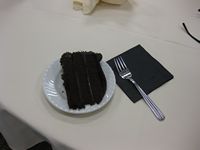 Mmmm, chocolate fudge cake. A note that Randy Lieberman (who spoke earlier) was responsible for the delicious lunch today. Thanks Randy!
Mmmm, chocolate fudge cake. A note that Randy Lieberman (who spoke earlier) was responsible for the delicious lunch today. Thanks Randy!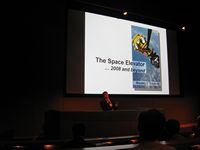
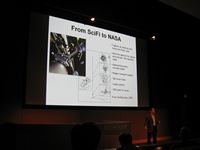
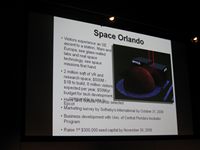
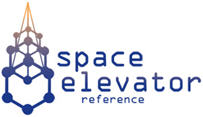 Over at the Space Elevator Reference website, Marc Boucher
Over at the Space Elevator Reference website, Marc Boucher  Only two more days until the 2008
Only two more days until the 2008 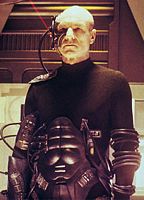
 With the addition of the Hungarian version of ‘Space Elevator’ (
With the addition of the Hungarian version of ‘Space Elevator’ ( A
A  Remember, on today’s ‘The Space Show’, host Dr. David Livingston interviews Dr.’s Bryan Laubscher and Martin Lades to talk about the upcoming Space Elevator Conference and the ‘state of affairs’ for the Space Elevator.
Remember, on today’s ‘The Space Show’, host Dr. David Livingston interviews Dr.’s Bryan Laubscher and Martin Lades to talk about the upcoming Space Elevator Conference and the ‘state of affairs’ for the Space Elevator.